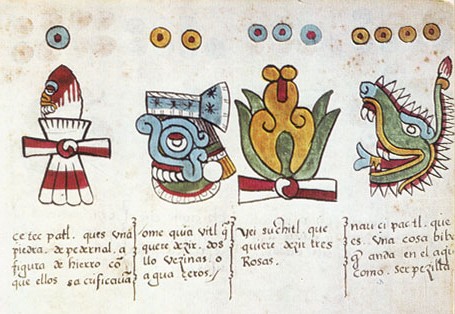|
Teixiptla
A teixiptla is a deity embodiment used within Aztec ritual practice. Either a person or sculpture, teixiptlas were fashioned to represent deities and in some cases represent deceased ancestors who were venerated as deities. It was an Aztec belief that through ritual costuming among other processes, the teixiptla assumes the life force/universal power (called teotl) of a deity and becomes their embodiment. These ritual costumes included the flayed skin of sacrificial victims and/or deity regalia which included headdresses and clothing among other accouterments. Teixiptlas were often the ritual centerpiece of Aztec festivals and were present throughout Aztec life in urban centers, countryside, etc. Etymology The approximate translations of “teixiptla” from Nahuatl to English are “impersonator”, representative”, “substitute”, and “image”, however the etymology of the word suggests a much more intimate and complex concept beyond these definitions. The word combines ... [...More Info...] [...Related Items...] OR: [Wikipedia] [Google] [Baidu] |
Codex Magliabechiano (folio 35r)
The Codex Magliabechiano is a pictorial Aztec codex created during the mid-16th century, in the early Spanish colonial period. It is representative of a set of codices known collectively as the ''Magliabechiano Group (others in the group include the Codex Tudela and the Codex Ixtlilxochitl).'' The Codex Magliabechiano is based on an earlier unknown codex, which is assumed to have been the prototype for the Magliabechiano Group. It is named after Antonio Magliabechi, a 17th-century Italian manuscript collector, and is held in the National Central Library (Florence), Biblioteca Nazionale Centrale, Florence, Italy. It was created on European paper, with drawings and Spanish language text on both sides of each page. The Codex Magliabechiano is primarily a religious document. Various deities, indigenous religious rites, costumes, and cosmological beliefs are depicted. Its 92 pages are almost a glossary of cosmological and religious elements. The 52-year cycle is depicted, as well as the ... [...More Info...] [...Related Items...] OR: [Wikipedia] [Google] [Baidu] |
.jpg)
